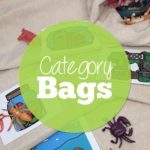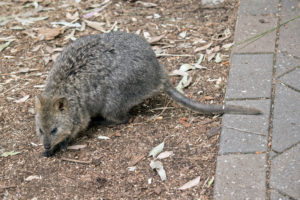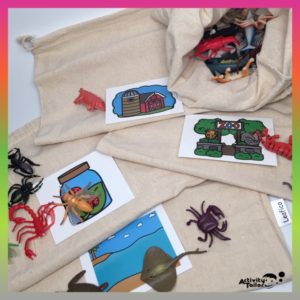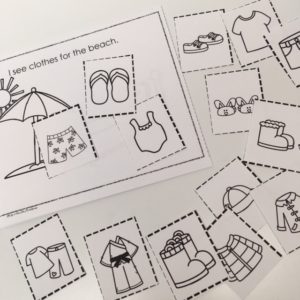Is categorization a skill we really need to work on? YES. In fact, it’s probably the most critical attribute skill we need.
The ability to categorize objects allows us to “file” information in our brains according to “like” characteristics. This ability to organize not only makes accessing the information more efficient, it allows us to predict or make inferences about similar, unfamiliar items.
For instance, we might know quite a bit about dogs or farm or zoo animals, but what about a quokka?
Even if we’ve never heard of this before, a quick glance and we’d place it in the animals/living things category. We take in its size (similar to a cat) and fur. We might notice it has a pouch. Hmmm…now we’re starting to put it in a more specific file with kangaroos and opossums. Since we have extensive knowledge and this one’s new to us, we can also take a guess that it’s probably endangered and, at least for those of us in the US, that it lives “somewhere else.”
Is this the definitive guide to quokka? Of course not, but without any previous exposure we can surmise quite a bit of information.
Our little people need a lot of help in organizing their world so they can better retrieve the information they have and draw on that information to make guesses about other items.
When I start with categories, I might bring in a book like “Dear Zoo” or “Goodnight Gorilla” to get some zoo animal vocabulary established. Then we might move on to playing vet with a stuffed dog, cat and bunny to address some common pets. A few sessions later, we might have a bowl of water and a bag of ocean creatures and “swim,” “splash,” “dive,” and “float.”
With this practical experience under their belts, I’ll bring in a more structured activity—categorization bags. I made these with linen bags I purchased on Amazon, but you could just as easily use sturdy gift bags or even brown paper bags.
I sewed a Velcro dot on the front of each bag and then made laminated category tags (For gift bags, you could use adhesive Velcro dots. For brown bags, just glue on a label or draw a picture yourself.) I like my category labels to be of the location rather than examples of what goes in there, so I can make sure my kiddos are making the overall connection (ex. farm, zoo, ocean) rather than just matching.
I fill an unlabeled bag with a bunch of miniature plastic animals (I buy mine at Party City) and then we get to sorting! In this picture, we were sorting into bugs, zoo, ocean and farm animals, but I sometimes add pets (with a house label). You could also swap zoo for jungle or try circus, birds, arctic, etc.
I also have a bunch of chunky magnets I use the same way. For vehicles, we sort into road, sky and water vehicles (or you could try vehicles with engines vs. self-powered) and foods can be sorted into traditional food groups or by meal. I like to have kiddos sort one way and then change the subcategories and sort into others so they begin to understand that an object might have more than one “place” and categories aren’t always rigid.
Do you do activities like this? Let me know below!
If you are interested in a print and go activity for categories, click here. My newest Category Readers are a low prep, cut and paste activity that supports these goals too!










This Post Has 2 Comments
Thank you for the great ideas!
Would you be willing to share your “place” pictures?
Kristi, Sure! Give me a couple of days to get them together and I’ll send them out to subscribers this weekend 🙂 Kim
Comments are closed.